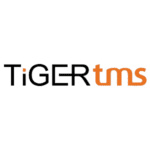 Recently, I had the unique opportunity to delve into current dynamics in the world of hotel operations and investments through participation in panels at the Cayuga HospitalityConsultants annual meeting and the BizNow Hospitality Summit in Chicago. The two panels offered a timely glimpse into the intersecting paths of hotel investors and operators, highlighting key trends, concerns, and areas of mutual interest.
Recently, I had the unique opportunity to delve into current dynamics in the world of hotel operations and investments through participation in panels at the Cayuga HospitalityConsultants annual meeting and the BizNow Hospitality Summit in Chicago. The two panels offered a timely glimpse into the intersecting paths of hotel investors and operators, highlighting key trends, concerns, and areas of mutual interest.
Emerging trends and shared concerns
- The labor market’s evolution: The labor market was discussed in both panels. While still cautious, hotel operators are observing an improvement in hiring conditions compared to last year. Similarly, investors seem a little less vocal than recent conferences I’ve attended, signally less perceived disruption by both groups.
- The resurgence of PIPs (Property Improvement Plans): Both panels concurred on the renewed vigor of PIPs. After years of pandemic-induced leniency, major hotel brands are reclaiming their standard compliance demands. This is in response to a dip in guest satisfaction during the ‘revenge travel’ period, marked by understaffing and underinvestment. The brands’ focus on guest scores and PIP compliance is an apparent attempt to revive and enhance the guest experience.
- The recovery of demand: A positive note from both discussions was the recovery of travel demand. Leisure travel continues to outperform, with group and small-scale business travel making a robust comeback. However, there’s a consensus that large-scale, managed business travel will recover more slowly and may not reach pre-pandemic levels. These observations generally underscore the durablity of travel demand, even amidst significant disruptions like the pandemic and economic recessions.
Reflections and implications for the future
The discussions led to some pivotal reflections and questions about the future of hotel investments:
- Resilience of travel demand: Given the demonstrated resilience of travel demand, how does this affect the perceived risk of hotels as an asset class in commercial real estate? Traditionally, hotels have been considered riskier due to their ’24-hour lease’ nature compared to more stable sectors like office spaces. However, this risk perception might be shifting with changing work patterns impacting other asset classes such as office compared to the steadfast nature of travel demand.
- Labor market challenges: The slight easing in the labor market presents a hopeful outlook, yet the broader issue of labor supply, influenced by slowing U.S. population growth, remains a structural challenge. This problem, potentially long-term without effective immigration policies, calls for strategic thinking in hospitality human resource management and the increasing use of technology.
- Alignment of interests: Notably, the alignment of interests between hotel investors and operators appears to be strengthening. As operators obviously influence the numerator in the return equation, a shared understanding of challenges and objectives can lead to more aligned strategies and successful outcomes.
In conclusion, these discussions at the Cayuga Hospitality Consultants meeting and the BizNow Hospitality Summit offer critical insights into the evolving landscape of hotel operations and investments. They highlight the need for adaptive strategies, collaborative approaches, and a deep understanding of market dynamics to navigate the challenges and opportunities ahead in the hospitality sector.



















